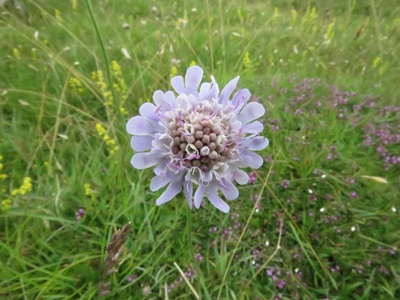 English Stone Crop, near Tarn Hows 30 July
English Stone Crop, near Tarn Hows 30 July
 English Stone Crop, near Tarn Hows 30 July English Stone Crop, near Tarn Hows 30 July One winter’s day, I remember seeing a stand of bog myrtle- dark twigs rising above the ice surrounding Tarn Hows. Today, the shrubs are leafy green and fragrant, amongst fragrant water mint. Cotton grass and orchids too, and bog asphodel. On outcropping rock there’s a different flora: English stonecrop and bilberry whose bluish fruits begin to ripen. Marsh valerian- ‘ it smells of horses, ’ says a friend. We hear a loud barking and scan the trees until we find a deer in full cry. Top left to right: foxglove, bilberry, lichen and bilberry, orchid, marsh valerian, bog myrtle with cotton grass and bog asphodel, eye-bright, eye-bright with yellow rattle On Scout Scar, I’m struck by a shift in the seasonal motifs. Lady’s mantle is everywhere amongst the grasses, on limestone clitter. Fragrant, if only the sun would appear. And there’s a haze of flowering grasses. Six spot burnet moths are nectaring on field scabious- the moths are not plentiful, but to find a handful bodes well after their absence for a couple of years. Top left to right: Lady's mantle, grasses, field scabious and six-spot burnet moth, achillea, St John's wort, a louring sky over the Lake District Fells, self-heal The birds: young families. The heady experience of listening to skylark whilst watching linnet- I’m making the most of late-season lark song. I catch the note of stonechat close to where I glimpsed a male fleetingly in the spring. They have bred, hurray! They were abundant here but it’s a long time since I’ve found them breeding successfully. After an hour of sun the skies grow dark and colour drains away. I spend an hour listening to the family of stonechat in gorse and up in a conifer. My photographs are of the male and a juvenile. Indifferent images, a delightful experience. Left to right: two images of male stone chat, and juvenile
0 Comments
Your comment will be posted after it is approved.
Leave a Reply. |
Archives
July 2024
Categories
All
|





















 RSS Feed
RSS Feed